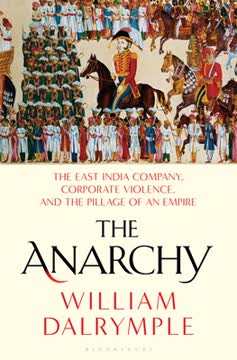Key Takeaways
1. The Harlem Renaissance: A Cultural and Artistic Revolution
"Harlem was my first positive reaction to American life."
Cultural rebirth. The Harlem Renaissance, spanning the 1920s and 1930s, marked a pivotal moment in African-American history. This period saw an explosion of black artistic, literary, and musical expression centered in Harlem, New York.
Breaking stereotypes. The movement aimed to challenge prevailing racial stereotypes and assert a new, positive black identity. Artists, writers, and musicians sought to redefine how African-Americans were perceived by both white America and themselves.
Global impact. The Harlem Renaissance's influence extended far beyond its geographical boundaries, inspiring similar movements worldwide and contributing significantly to the broader American cultural landscape.
2. Jazz: The Heartbeat of Harlem's Renaissance
"Jazz is played from the heart. You can even live by it."
Musical revolution. Jazz emerged as the quintessential sound of the Harlem Renaissance, embodying the spirit of innovation and freedom that characterized the era.
Cultural fusion. Jazz represented a unique blend of African rhythms, European harmonies, and American improvisation, mirroring the diverse cultural influences shaping the African-American experience.
Social impact. Beyond its musical significance, jazz became a powerful tool for social change, challenging racial barriers and fostering interracial understanding.
- Key figures: Louis Armstrong, Duke Ellington, Billie Holiday
- Iconic venues: Cotton Club, Apollo Theater
- Styles: Ragtime, Blues, Swing
3. Literary Giants: Voices of the New Negro Movement
"If we must die, let it not be like hogs hunted and penned in an inglorious spot."
Literary awakening. The Harlem Renaissance saw the emergence of a new generation of African-American writers who gave voice to the black experience with unprecedented power and eloquence.
Diverse voices. From poetry to novels, essays to plays, these writers explored themes of racial identity, social justice, and the complexities of African-American life.
Enduring legacy. The works produced during this period continue to influence American literature and shape discussions on race and identity.
Notable authors and works:
- Langston Hughes: "The Negro Speaks of Rivers"
- Zora Neale Hurston: "Their Eyes Were Watching God"
- Claude McKay: "If We Must Die"
- James Weldon Johnson: "The Autobiography of an Ex-Colored Man"
4. Basketball's Role in Challenging Racial Stereotypes
"Fairness creeps out of the soul in the athletic world to a larger extent than anywhere else."
Breaking barriers. Basketball, particularly through teams like the Harlem Renaissance Big Five (Rens), played a crucial role in challenging racial stereotypes and segregation in sports.
Athletic excellence. The success of black basketball teams and players demonstrated African-American athletic prowess and capability, countering racist narratives of inferiority.
Social impact. Sports became a powerful arena for advancing civil rights, as the achievements of black athletes garnered respect and admiration across racial lines.
Key milestones:
- 1939: Rens win the first World Professional Basketball Tournament
- 1950: NBA integrates with Chuck Cooper, drafted by the Boston Celtics
- Influence on future generations of athletes and civil rights activists
5. The Great Migration: Reshaping America's Racial Landscape
"When it came night, the white waves paced to and fro in the moonlight, and the wind brought the sound of the great sea's voice to the men on shore, and they felt that they could then be interpreters."
Mass movement. Between 1916 and 1970, approximately six million African-Americans moved from the rural South to urban areas in the North, Midwest, and West.
Driving forces. The Great Migration was fueled by a combination of factors:
- Economic opportunities in Northern industries
- Escape from Jim Crow laws and racial violence in the South
- Desire for better education and social conditions
Cultural impact. This demographic shift profoundly altered the cultural landscape of American cities, contributing to the vibrant urban black culture that flourished during the Harlem Renaissance.
6. W.E.B. Du Bois and the Talented Tenth: Intellectual Leadership
"The Negro race, like all races, is going to be saved by its exceptional men."
Intellectual foundation. W.E.B. Du Bois, a key figure in the Harlem Renaissance, proposed the concept of the "Talented Tenth" - a cadre of educated, upper-class African-Americans who would lead the race to social and economic progress.
Leadership through education. Du Bois emphasized the importance of liberal arts education in developing black leaders who could effectively advocate for civil rights and racial equality.
Debate and criticism. The Talented Tenth concept sparked ongoing debates within the African-American community about the best strategies for achieving racial uplift and social progress.
Key points of Du Bois's philosophy:
- Emphasis on higher education
- Advocacy for full civil rights
- Critique of Booker T. Washington's accommodationist approach
7. The Legacy of the Harlem Renaissance: Enduring Impact on American Culture
"I was the dream and the hope of the slave. I rise. I rise. I rise."
Lasting influence. The Harlem Renaissance's impact extends far beyond its historical moment, continuing to shape American culture, art, and politics.
Civil rights catalyst. The movement laid crucial groundwork for the Civil Rights Movement of the 1950s and 1960s, fostering a sense of racial pride and political consciousness.
Cultural transformation. The Harlem Renaissance fundamentally altered perceptions of African-American culture, both within the black community and in broader American society.
Enduring legacies:
- Influence on subsequent literary and artistic movements
- Contribution to the development of jazz as America's classical music
- Shaping of discourse on race, identity, and cultural pluralism in America
Last updated:
Review Summary
Readers praise On the Shoulders of Giants as an engaging exploration of the Harlem Renaissance, blending history with Abdul-Jabbar's personal experiences. Many appreciate the author's insights into African American culture, literature, music, and sports. The book's accessible writing style and unique perspective receive commendation. Some reviewers note occasional repetition and lack of specific citations as minor drawbacks. Overall, the book is lauded for its educational value, inspiring content, and Abdul-Jabbar's passion for the subject matter.
Similar Books
Download PDF
Download EPUB
.epub digital book format is ideal for reading ebooks on phones, tablets, and e-readers.











